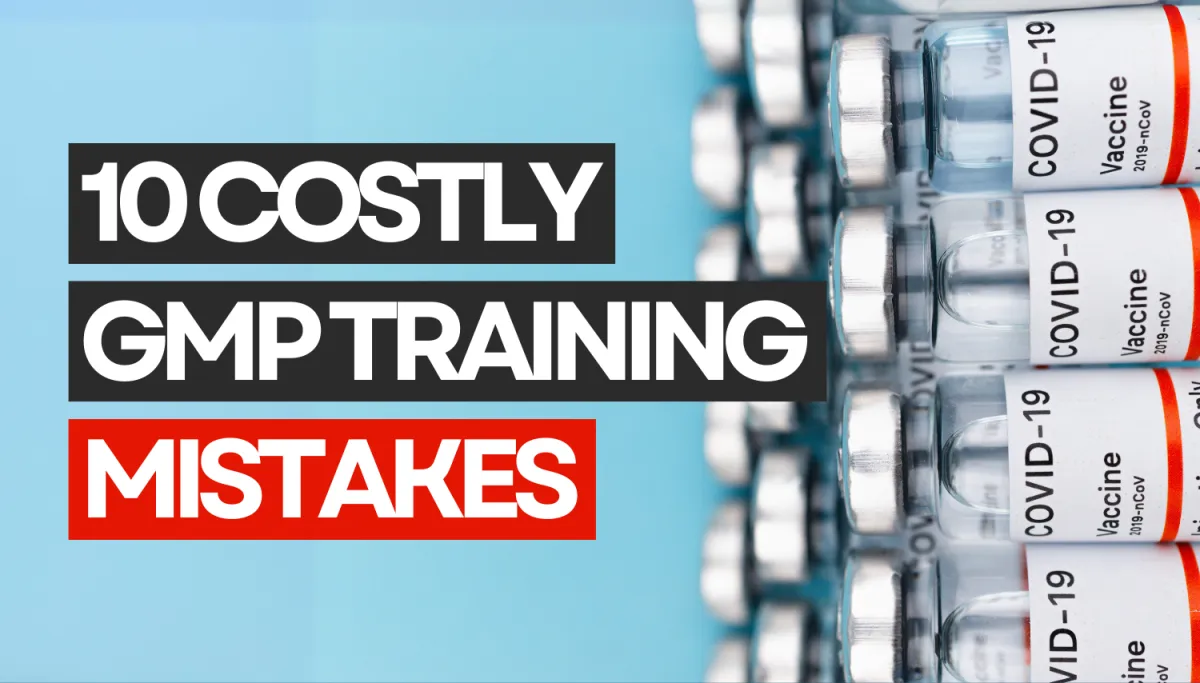LATEST NEWS

10 Costly GMP Training Mistakes
Introduction
Good Manufacturing Practice (GMP) training is essential in the pharmaceutical and medical device industries. It forms the backbone of a compliant, safe, and efficient operation, ensuring that every individual involved in the manufacture, testing, and distribution of products understands their responsibilities. However, many companies—despite good intentions—make fundamental errors in the planning, delivery, and follow-up of GMP training. These mistakes can result in costly regulatory non-compliance, increased product risk, and employee disengagement.
At Quality Systems Now, we help organisations prevent costly GMP training mistakes.
1. Treating GMP Training as a One-Time Event
One of the most frequent mistakes is considering GMP training a “tick-the-box” exercise. Some organisations deliver an initial training session at onboarding and then fail to follow up. Without periodic refresher training, knowledge fades and bad habits creep in.
How to fix it:
Implement a structured training calendar that includes induction, refresher, and role-specific sessions throughout the year. Integrate training into continuous improvement initiatives and tie it to quality metrics such as deviations and audit findings.
2. Failing to Tailor Training to Job Roles
Generic GMP training that is not relevant to specific roles can bore participants and fail to address the unique risks associated with their tasks. For example, warehouse staff and laboratory analysts face different compliance requirements, yet often receive the same content.
How to fix it:
Design modular GMP training programs tailored to distinct job functions. Conduct training needs assessments for each role, and include real-world examples and case studies specific to their daily work environment.
3. Using Ineffective Training Methods
Solely relying on lectures or static slide decks can lead to disengaged learners who retain little of the content. Adults learn best through interactive and applied methods, especially in regulated environments where procedures must be followed precisely.
How to fix it:
Incorporate a mix of training modalities such as simulations, workshops, hands-on demonstrations, e-learning, and group exercises. Encourage two-way communication and integrate knowledge checks to reinforce learning.
4. Neglecting to Evaluate Training Effectiveness
Another common oversight is not measuring whether training was effective. Attendance alone is not proof of competency. Without assessing learning outcomes, it is impossible to identify gaps and improve programs.
How to fix it:
Use Kirkpatrick’s model or similar frameworks to evaluate training effectiveness on multiple levels: reaction, learning, behaviour, and results. Use quizzes, post-training evaluations, on-the-job observation, and audit results to track knowledge retention and behaviour change.
5. Ignoring the Role of Supervisors in Training
Training often fails when direct supervisors are not involved. If line managers do not reinforce training messages or lead by example, employees may not prioritise compliance in their day-to-day work.
How to fix it:
Train supervisors on how to coach and reinforce GMP principles on the floor. Make them accountable for ensuring staff follow procedures and understand the “why” behind each requirement. Encourage them to model good GMP behaviour at all times.
6. Underestimating the Importance of Documentation
In regulated environments, “if it’s not documented, it didn’t happen.” Poor or missing training records are a frequent finding in audits and inspections. Without accurate documentation, organisations cannot demonstrate compliance or staff competency.
How to fix it:
Implement a robust training documentation system. Whether manual or electronic, ensure it captures attendance, topics covered, learning assessments, and trainer details. Link training records to job descriptions and quality system elements.
7. Overlooking Training During Change Management
When procedures, equipment, or systems change, training is often an afterthought. This can lead to confusion, errors, or non-conformance if staff are not adequately prepared to adopt new practices.
How to fix it:
Include training as a mandatory step in all change control processes. Before implementing any procedural or technical change, ensure affected personnel receive updated training, and that their competency is verified before go-live.
8. Providing Inadequate Induction for Temporary or Contract Staff
Contractors, temporary workers, or consultants may not receive the same level of GMP training as full-time staff, leading to inconsistent practices and increased risk, especially in critical areas.
How to fix it:
Create a streamlined yet comprehensive GMP induction program specifically for short-term or contract staff. Ensure they understand site-specific procedures, hygiene requirements, and reporting channels. Make completion of induction training mandatory before they begin work.
9. Failing to Link Training to Quality Metrics
Training programs that are not aligned with real-world performance data tend to become disconnected from operational goals. This reduces their impact and weakens the case for ongoing training investment.
How to fix it:
Integrate training plans with your quality management system. Analyse deviations, CAPAs, and audit findings to identify training gaps. Use these insights to adjust your training focus and demonstrate how improved training leads to fewer quality issues.
10. Not Promoting a Culture of Continuous Learning
Perhaps the most costly mistake is failing to embed GMP training into the organisational culture. When compliance is seen as a burden rather than a shared value, staff may disengage and take shortcuts.
How to fix it:
Champion a culture of learning and continuous improvement. Recognise and reward GMP excellence, encourage questions and feedback, and create safe spaces for employees to admit knowledge gaps. Reinforce the idea that compliance is everyone’s responsibility, not just that of the quality department.
Let's have a chat about how we can help your organisation
Effective GMP training is not optional—it is a regulatory expectation and a business imperative. In an industry where product safety and patient health are on the line, training programs must go beyond the basics. By identifying and correcting these ten common mistakes, organisations can strengthen compliance, reduce operational risk, and build a knowledgeable, confident workforce.
Every company has the opportunity to turn GMP training from a regulatory burden into a strategic advantage. With careful planning, role-specific content, and continuous engagement, training becomes a living component of your quality system—one that supports sustainable compliance and fosters a culture of excellence.
